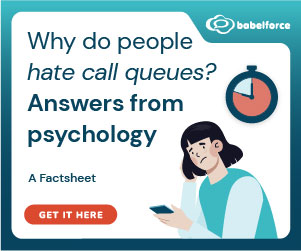There are certain words that go together: like east and west; Bonnie and Clyde; milk and cookies.
Customer acquisition and customer retention is another famous pair – and this is the one everybody seems to be talking about at the moment.
In fact, in the UK, the ‘Big Six’ utilities reported a record loss of customers over the last financial year. While on the other side of the Atlantic, one of the major US mobile phones providers is cracking under the pressure of the smaller competitors.
But it’d be too easy to argue that customer retention only affects bigger players. On the contrary, this is a deeper, widespread issue.
According to Howard Feiertag and John Hogan’s 2001 book Lessons from the Field, there are six main reasons why customers leave, never to return.
Although originally applied to the hospitality industry, these reasons seem to be valid beyond this sector. They’re all relatively trivial and quite surprising, except for one.
Death, moving away, recommendations from others and price all score single digits. (That’s right, competitors’ cheaper offers will attract only a tiny 9% of all your customer base.)
Dissatisfaction with the product or service is fixed at an unimpressive 14%.
So, what can possibly account for 68% of customers’ desertion? Attitude, boredom, carelessness, dismissiveness or emotionless… or you can probably find a synonym starting with each of the remaining letters of the alphabet! But put it more simply and comprehensively, it’s the perceived indifference towards their questions and concerns that drives customers away.
This is also supported by a Marketing Sherpa article that shed some light on the disagreement between sellers and customers on the reasons for loyalty. While sellers thought the main factor that caused clients to leave was price (56%), customers said it was primarily due to customer service (4%). In clients’ viewpoints, price only came second (29%).
More recently, NewVoiceMedia highlighted that the number of US customers leaving a business due to poor customer experience has increased by 5% since 2013. And while in the UK and Australia the percentage dropped by about 10% in three years, inadequate customer service remained a top reason for switching.
These studies make it clear that customers are willing to pay more for an excellent service, and that this is key to keeping them satisfied and therefore loyal.
While there’s a myriad of step-by-step strategies and detailed advice for increasing customer retention – ranging from giving out surprises as a gesture of appreciation to leveraging feedback surveys – I think that one ‘super category’ will suffice when it comes to excellent customer service: communication.
But not just any communication; the art of communication as a powerful human connection.
On the surface, this implies communicating transparently and effectively. But on a more profound – equally important – level, two other important aspects also come into play.
1. The Human Need to Be Understood
Peter Drucker said that: “The most important thing in communication is hearing what isn’t said.”
It’s essential to listen empathetically to both explicit and implicit information (noticing, for example, the customer’s tone of voice), and to use this to create intellectual and emotional connectivity. In so doing, staff’s competence and care for the customer will also come to the surface.
My mother Carla knows what I mean very well. She had been a guest of the same resort for 29 years when she nostalgically ‘reminded’ the executive staff that she was possibly their most loyal customer, having visited every year since the opening (sometimes twice a year). On the 30th year, they rewarded her loyalty with a free two-week holiday for the whole family, in appreciation of her enduring trust. They heard her underlying message.
2. The Emotional Impact of Language
At the same time, it’s vital to inject positivity – as opposed to negativity – into the language, not simply to sound more responsive and with a ‘can do’ attitude, but also to manage and shift customers’ perceptions, and make them feel good about a potential ‘no’.

Laura Olcelli
In fact, research into the brain increasingly shows that negative language activates stress hormones in both the speaker’s and the listeners’ brains, impairing logic and reasoning capabilities, and making us default to emotional, irrational thinking.
So, how about: “Please understand, I did my very best to help you today, and gave you all available options’ instead of ‘Unfortunately, on this occasion, I can’t help. I’m really sorry for the inconvenience’?
Words are the most valuable and yet the cheapest commodity. Empathetic, positive communication has the power to enhance performance, reduce complaints, boost staff morale and drive profitability. Most importantly, it can build bridges of trust and respect between companies and customers, and in this way encourage customer loyalty and retention.
Thanks to Laura Olcelli, PhD, a Consultant at T2 Linguistics
Author: Robyn Coppell
Published On: 29th Jun 2018 - Last modified: 3rd Dec 2020
Read more about - Guest Blogs, Vonage









































